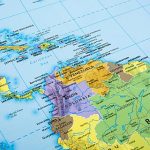
Marc Joffe
San Francisco is proving to be ground zero in the nationwide commercial real estate collapse. While the values of offices and malls are tumbling in many US cities, the losses in San Francisco are more dramatic and, unlike elsewhere, have extended to hotels. City and state government mismanagement have played a major role in destroying billions of dollars in assessable real estate values, but the role of these policies is easily overlooked.
San Francisco’s plight was thrown into sharp relief on June 5, when the owner of two downtown hotels containing a combined 2,925 rooms announced that it would cease making payments on a $725 million mortgage backed by the properties. Commercial bond investors will now have to find a company willing to purchase the hotels at a small fraction of their estimated 2020 valuation of $1.561 billion.
In explaining the company’s decision to walk away from the hotels, Thomas J. Baltimore, Jr., Chairman and Chief Executive Officer of Park Hotels and Resorts stated:
After much thought and consideration, we believe it is in the best interest for Park’s stockholders to materially reduce our current exposure to the San Francisco market. Now more than ever, we believe San Francisco’s path to recovery remains clouded and elongated by major challenges – both old and new: record high office vacancy; concerns over street conditions; lower return to office than peer cities; and a weaker than expected citywide convention calendar through 2027 that will negatively impact business and leisure demand and will likely significantly reduce compression in the city for the foreseeable future.
Another nearby hotel is also experiencing a dramatic valuation decline. The 1,195-room Westin St. Francis Hotel has asked the local tax assessor to slash the combined assessment of its two parcels from $1.037 billion to $101 million.
The hotels are within walking distance of the Westfield San Francisco Centre mall that is losing its anchor retailer, Nordstrom, this summer. Before Nordstrom announced the closure, S&P had already estimated that the mall’s value had declined by over 70% since it was appraised in 2016.
An even larger value decline was suffered by a 22‐story office tower at 350 California Street. After being valued at around $300 million in 2019, the property recently changed hands for between $60 million and $67.5 million according to media reports.
When considering why San Francisco has suffered so much commercial real estate value destruction in the 2020s, it is tempting to conclude that the city’s tech‐heavy workforce was better equipped to work from home. This factor played a role but should not be overestimated. Indeed, one common software development methodology, known as agile, often involved daily in‐person team meetings. So, it is not strictly true that software engineering is a solitary job.
Rather than blame the pandemic or the local business mix, San Francisco and California political leaders should look inward at their policy errors that exacerbated the city’s distress. Among these unforced errors were their harsh lockdown policies and the failure to provide adequate security in the downtown core.
The Lockdown
San Francisco and neighboring counties were the first to impose sweeping stay‐at‐home orders at the beginning of the COVID pandemic in the US. More importantly, San Francisco and its neighbors were slower than most other population centers to relax COVID-19 restrictions.
Over a three‐year period, San Francisco’s public health officer issued a blizzard of rules that were often lengthy and challenging to implement. As late as January 27, 2021 (over ten months into the pandemic), he issued an order that required “all residents in the County to reduce the risk of COVID-19 transmission by staying in their residences to the extent possible and minimizing trips and activities outside the home.” At the time, California had more cases per capita than the less restrictive states of Texas and Florida, begging the question of how effective lockdown measures were.
By continuing shelter‐at‐home restrictions for so long, San Francisco normalized remote work, thereby encouraging employers and employees to adopt to a new normal. Many employees moved beyond easy commuting distance from the city on the assumption that they could retain hybrid or fully remote work arrangements permanently.
Although San Francisco’s political leaders trumpet the city’s low per capita death rate from COVID-19, some of that is attributable to individuals temporarily or permanently leaving the area, thereby deflating the true denominator of any death rate calculation. Economist Stephen Hanke has concluded that lockdowns had “a negligible effect” in COVID deaths.
Lack of Security
As the accompanying map shows, San Francisco has a very high concentration of high value properties in a small geographic area. Many of these $100 million plus properties (based on assessed value) are within walking distance of the Tenderloin neighborhood which has struggled over several decades. But in recent years, the social problems of the Tenderloin have increasingly spilled over into the adjacent, high‐value areas, deterring tourists, shoppers, and office workers from visiting.
Measuring crime trends is challenging. According to Police Department statistics, reported crimes in the first five months of 2023 are below pre‐pandemic levels. But some proportion of crime goes unreported and it is possible that this proportion has increased given the low likelihood that San Francisco police will identify a suspect. In 2022, only 2.9% of larceny thefts were cleared within one year.
Also, residents clearly perceive an increase in crime. The most recent City Controller survey found that San Franciscans rated the city’s safety a C+, the lowest grade since 1996. Safety ratings were especially low in the Tenderloin and two adjoining neighborhoods with high‐value commercial real estate: South of Market and Financial District/South Beach.
Critics have highlighted various public safety policy concerns including the defund the police movement, lax prosecution, reclassification of shoplifting goods worth less than $950 as a misdemeanor, disincarceration, and lack of enforcement against open air drug markets. Since these issues have been covered elsewhere and libertarians have varying opinions about them, I’ll address a couple of other aspects that have received less attention.
First, the city has encouraged many individuals who may be more prone to criminal activity to concentrate in and around the Tenderloin. It has done this by establishing a cluster of thousands of supportive housing units, mostly in converted hotels in the area. Although residents of supportive housing are no longer defined as “homeless”, many if not most are still dealing with issues such as drug addiction that contributed to their loss of shelter.
During the pandemic, the city converted hundreds of additional hotel rooms in the area to temporary residences for unhoused homeless individuals in hopes of preventing them from getting and spreading COVID-19. But the unintended effect of this program, known as Project Roomkey, seems to have been to increase drug abuse and disorder at the periphery of the Tenderloin.
One Project Roomkey property, Hotel Whitcomb, housed about four hundred homeless individuals, many of whom were continuing to use drugs. Shortly thereafter, a new open air drug market became established in an alley just south of Market Street. Both the hotel and the drug market were near a new Whole Foods store which was forced to close due to high rates of theft and violent criminal activity.
Aside from concentrating potential offenders in the area, the city and activists appear to have neutered two quasi‐private mechanisms that allow business districts to enhance security levels beyond that which the city government would normally provide.
Since 1847, San Francisco has had a category of law enforcement officers known as a Patrol Special Police. These trained officers can be directly hired by groups of merchants and/or homeowners to patrol and provide other security services within a designated area. In 1994, there were 72 patrol special police serving 65 areas. But their ranks decreased in recent decades and, as of 2022, only one officer remained.
Although clients expressed a high level of satisfaction with their services, city policies have decimated the program. San Francisco’s charter requires the city’s Police Commission to approve new patrol special officers, but in recent years it has rarely done so. At the same time, the San Francisco Police Department offered a competing program under which city‐employed police officers could provide security services to local business when they would otherwise be off duty.
Since clients must cover officer pay at overtime rates, this alternative is more expensive. Further, given the shortage of police officers in San Francisco today, there may not be enough staff to regularly serve clients who might be interested in purchasing their services.
California has also given property owners the ability to form their own Business Improvement Districts (BIDs) since the 1990s. BIDs, also known locally as Community Benefit Districts (CBDs), are formed when owners representing a majority of the assessed valuation in a given area vote to tax themselves to finance district operations.
San Francisco’s Union Square area, the hotel and retail center that borders the Tenderloin, has had a BID in place since 1999. By 2018, the district was employing a large staff of cleaning ambassadors and safety ambassadors to deal with trash and quality of life issues respectively. The BID also installed a network of security cameras.
But the district’s efforts to force homeless individuals out of the area faced criticism from UC Berkeley’s Public Policy Clinic and local activists. Since the pandemic, the BID, now known as the Union Square Alliance, may have become less effective at maintaining cleanliness and safety in its neighborhood. It is not clear whether this is due to the criticism it has received, the retirement of its long‐time executive director, or some other factor.
Conclusion
An overly energetic lockdown and actions that concentrated violent and unstable individuals in the downtown area have contributed to the collapse of real estate values in San Francisco’s prime hotel, office, and retail districts. Quasi‐governmental institutions that might have stepped in to provide improved security and street conditions have been enfeebled in part by city policy.
At this point, it does not appear that any set of feasible policies can restore downtown San Francisco to the heights it reached in 2019. A more realistic possibility is that it will stabilize at much lower levels of occupancy, activity, and value forming a new base from which to grow. New and remaining property owners should be given the tools and the space to restore a sense of security among those visiting, shopping, and staying in the neighborhood. Finally, city and state leaders should avoid overreacting to pandemics.







